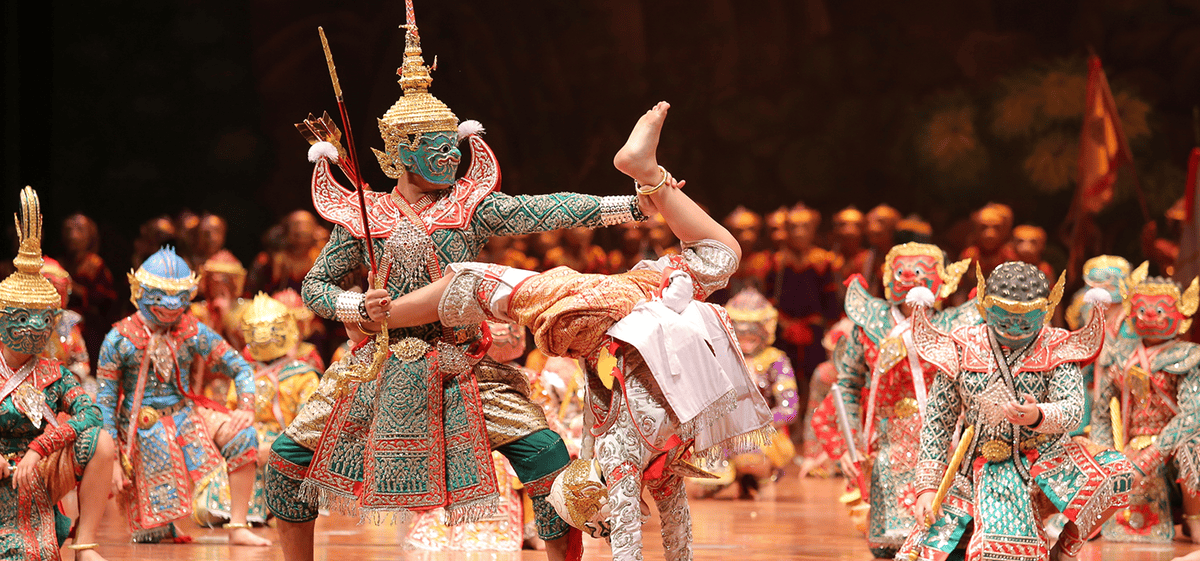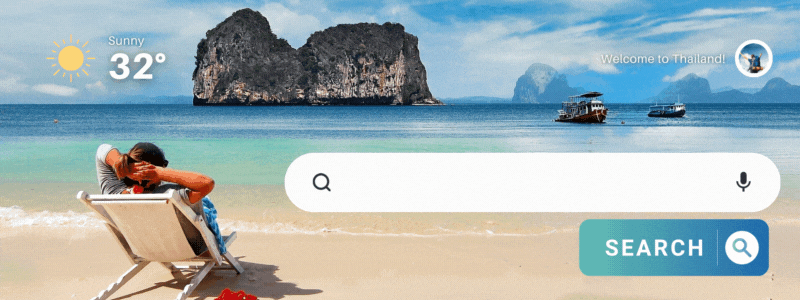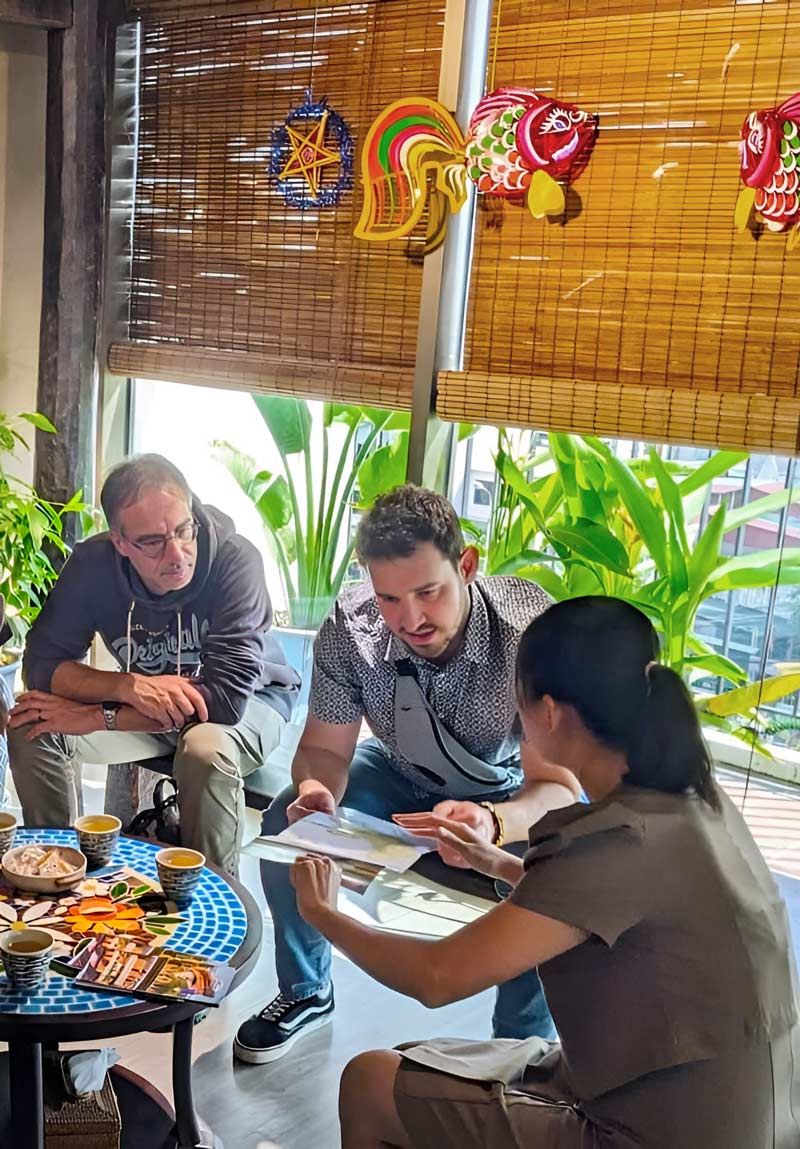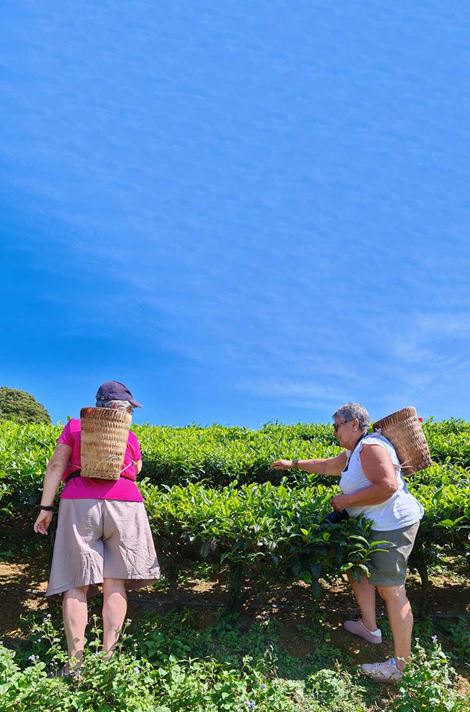Thailand’s Rich Heritage: 14 Cultural Highlights
Thailand is famous for its beaches and street food, but its culture and way of life are what truly stand out. With over 95% of the population practicing Buddhism, the country is filled with peace, spirituality, and warmth. Religion touches everyday life, from golden temples and morning offerings to the politeness in every interaction. Visiting Thailand is about more than the scenery: it's about experiencing a culture of serenity and respect. Here’s a look at some of the key parts of Thai culture…
- Buddhism, the spiritual heart of Thai culture
- Tradition of Temporary Ordination Among Young Men in Thailand
- The national flower, the yellow of devotion
- The culture of salvation in Thailand
- Traditional Attire, Thai Elegance and Sparkle
- Thai cuisine, queen of global street food
- The tuk-tuk, a symbol of urban life in Thailand
- The Sak Yant tattoo
- LGBTQ+, an essential facet of Thai culture
- 👉 But why such an opening?
- Muay Thai, Thailand's 600-year-old national sport
- Khon, Royal Dance of Thailand
- Colourful festivals
- Songkran – Thai New Year (April 13 to 15)
- Loy Krathong – the floating lantern festival
- Yi Peng – the lanterns in the sky of Chiang Mai
- Decorative art and architecture
- Traditional Thai Wedding
Buddhism, the spiritual heart of Thai culture
In Thailand, Buddhism is everywhere: in everyday gestures, education, life choices and even in the way visitors are welcomed. With more than 95% of the population claiming to be Theravada Buddhists, this philosophy not only guides the spiritual life, but also shapes the fundamental values of society: benevolence, restraint and respect.
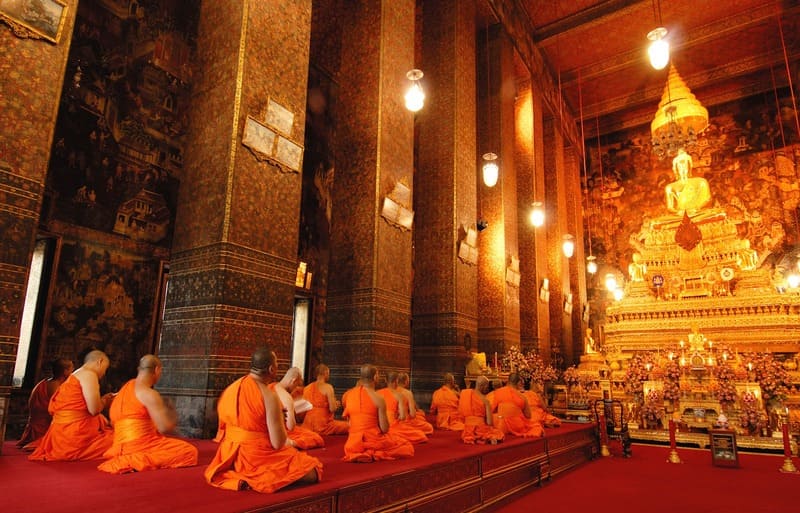
Temples (or wats) are much more than just places of prayer. They are the beating heart of the community: places of learning, mutual aid, gathering and moral education. Many families send their children to study the basics of ethical conduct at an early age, especially in rural areas.
Daily Buddhist practice, such as offering food to monks at dawn or silently following the rules of behavior, reveals a deep sense of merit (tham bun), an essential act for improving one's karma.
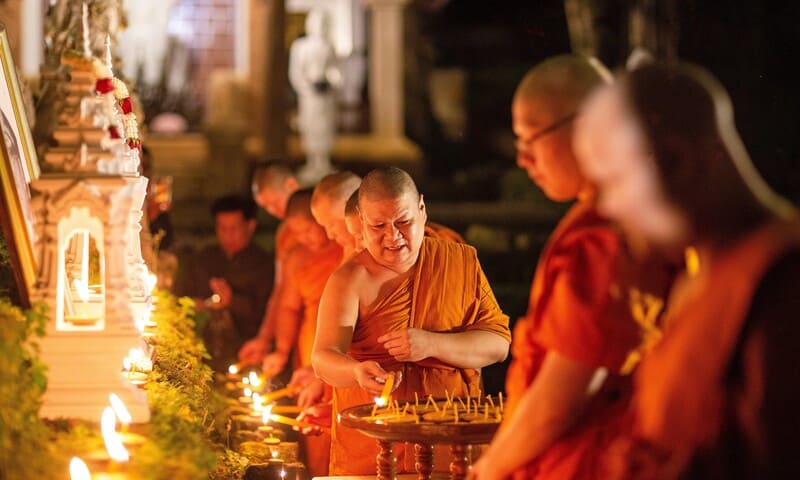
Tradition of Temporary Ordination Among Young Men in Thailand
In Thailand, entering holy orders is an almost unavoidable step for Buddhist men, often before marriage. Even for a short period of time (a few days or weeks), it shows piety, maturity and respect for parents.
The ordination ceremony includes several key stages: hair picking by the family, wearing the white outfit, procession to the temple, solemn vows and handing over the saffron robe. The atmosphere is both spiritual and festive, with dances, music and shared meals. Once ordained, the monk follows a strict schedule: waking up at 4 a.m., meditation, chanting, foraging at dawn, studying the texts, evening prayers, and living in absolute simplicity. He must comply with 227 rules of conduct.
Women, on the other hand, can reside temporarily in the temples, but without official religious status. They may not teach or lead rituals. Attending an ordination is a beautiful way to experience Thai culture from the inside. Proper attire is required (no black), a small donation is appreciated, and guests are encouraged to participate with respect and good humor.
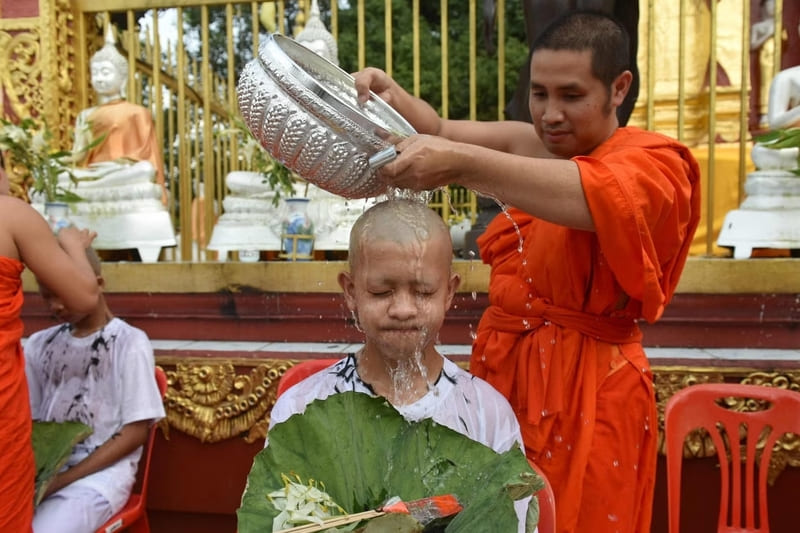
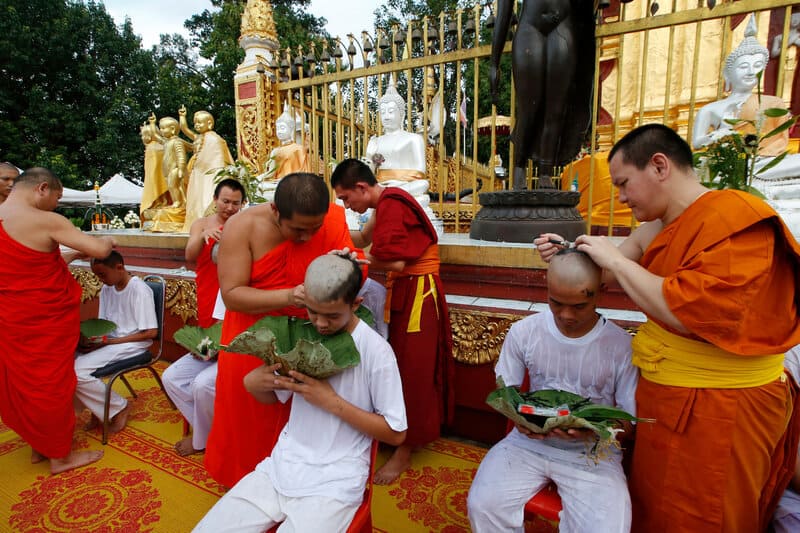
Good to know
The tradition of temporary ordination does not only concern Thais. Many devotees from neighboring countries, such as Vietnam or Laos, also choose Thailand to follow short-term spiritual retreats in Buddhist temples.
The national flower, the yellow of devotion
The ratchaphruek, also known as the cassia fistula or "golden flowering tree", is the national flower of Thailand. For Thais, its bright yellow color symbolizes not only fame and prosperity, but also Buddhism, the country's dominant religion.
This flower can be found everywhere: lining the streets, in allotments, or in temples. It is often used during important religious ceremonies or to make garlands for distinguished guests. A floral symbol that is both humble and deeply respected.
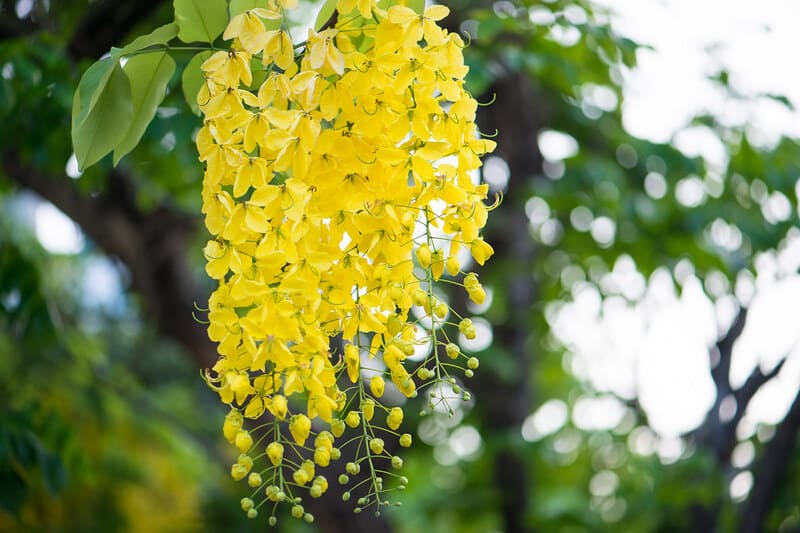
The culture of salvation in Thailand
In Thailand, politeness and respect are at the heart of social relations. One of the most well-known symbols of this culture is the wai – a greeting gesture where one joins the hands in front of the chest or forehead while bowing the head slightly. The higher the hands, the greater the respect expressed.
The wai is used to greet, thank, apologize, or show respect. It's a gesture that can be seen everywhere, from the market to the temples.
When you meet a monk, a few important rules apply. Women should not touch them. If they have to hand something to a monk, it's better to go through a man or put the object on the ground. These small gestures show the finesse of Thai codes.
Knowing how to observe and respect these customs not only helps to avoid clumsiness, but also to better understand the gentle and respectful spirit of the Thai people. Read more about: Hello in Thai? Guide to greeting like a local
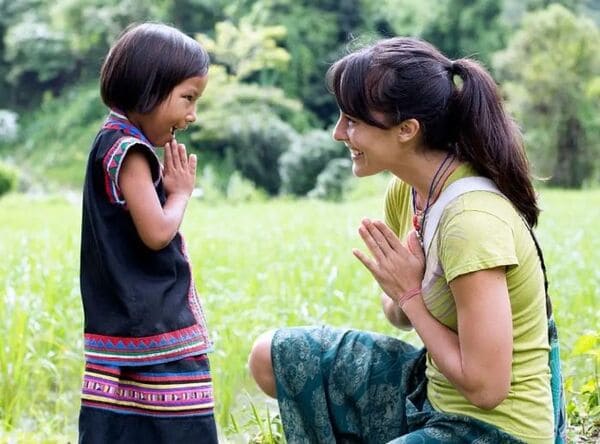
Traditional Attire, Thai Elegance and Sparkle
The Chut Thai, a traditional Thai costume, is worn at festivals, religious ceremonies and official events. It reflects the refinement of the local culture through its fabrics, colours and neat cuts.
- For women, styles such as Thai Chakkri, Siwalai or Borompiman enhance the figure with brightly toned silk fabrics, delicate drapes and elegant finishes. Each outfit embodies both grace and cultural pride.
- Men, on the other hand, wear a traditional shirt combined with a kraben (draped trousers) and sometimes a ceremonial scarf. These outfits, sober but distinguished, are reserved for important occasions.
.jpg)
Thai cuisine, queen of global street food
Renowned for its explosive flavours, Thai cuisine seduces with its subtle balance of sour, spicy, salty and sweet. The key ingredients? Chilli, lime and lemongrass. The dishes are also a real feast for the eyes, often colorful and appetizing. Here are some must-sees:
- Pad Thai: Stir-fried noodles with shrimp, tofu, bean sprouts and peanuts, served with a touch of lemon and chilli.
- Tom Yum: Iconic hot and sour soup, made with shrimp, mushrooms, lemongrass, galangal, and chili. An explosion of flavors in the mouth.
- Khao Soi: A northern specialty, this noodle curry is served in a coconut milk broth, topped with chicken or beef, and topped with crispy noodles.
- Khao Niew Mamuang (Mango Sticky Rice): A popular dessert mixing sticky rice, fresh mango, and sweetened coconut milk. Soft, creamy and refreshing.
.jpg)
>>> For more information, please read: Signature Thai Cuisine: Top 10 Must-Try Thai Dishes
The tuk-tuk, a symbol of urban life in Thailand
It is impossible to talk about Thai culture without mentioning the famous tuk-tuk. This motorized tricycle, halfway between a motorcycle and a taxi, is an integral part of the urban landscape, especially in Bangkok and in the big cities. Used by both locals and travelers, it embodies a typical Thai way of getting around: fast, open to the outside, a little chaotic but still full of charm.
If you're visiting Thailand, feel free to take at least one tuk-tuk ride – a fun and local experience. Just remember to negotiate or ask for the price before going up!
.jpg)
The Sak Yant tattoo
Sak Yant is a sacred art of tattooing, performed with Sanskrit or Pali characters, most often by monks in Buddhist monasteries. Far beyond the aesthetic aspect, these tattoos have a deep spiritual meaning: they are supposed to protect their wearer from bad luck and attract good luck. The designs usually depict sacred figures or powerful symbols such as tigers, snakes, or depictions of the Buddha, symbolizing a close connection to divine forces.
Sak Yant occupies an important place in Buddhist rituals in Thailand, especially during the yant invocation ceremonies, conducted by renowned tattoo masters. Learn more about Thai Tattoo, the secrets of the Sak Yant.
.jpg)
LGBTQ+, an essential facet of Thai culture
Thailand is one of the most open countries in Asia towards the LGBTQ+ community. Even if legal equality is only partially achieved, their presence is fully assumed in society. When you travel to Thailand, you may be surprised to see so many transgender people (kathoey) working in hospitality, spas, tourism, or media. Their visibility is natural, respected and well integrated into daily life.
The country is also recognized as a major destination for gender reassignment surgeries, thanks to reputable clinics and high-level medical know-how.
👉 But why such an opening?
- Buddhism, the majority religion, emphasizes individual karma rather than moral judgments, which promotes tolerance.
- A less rigid social culture: Thailand values harmony and self-expression, leaving more room for diverse identities.
- Media influence: Movies, series, and pageants like Miss Tiffany's Universe have normalized the LGBTQ+ presence in popular culture.
Today, Bangkok, Chiang Mai and Phuket host Pride events and have become flagship destinations for LGBTQ+ travelers from all over the world.
.jpg)
Muay Thai, Thailand's 600-year-old national sport
Muay Thai, often referred to as Thai boxing, is much more than just a martial art. Born on the ancient battlefields, it is now considered a symbol of national identity. Each fight is preceded by a codified ritual, the Wai Khru, where the boxer pays tribute to his masters in a dance imbued with respect and spirituality. Practiced throughout the country, taught in both camps and temples, Muay Thai embodies the discipline, faith and cultural pride of the Thai people.
.jpg)
Khon, Royal Dance of Thailand
Khon is a traditional dance emblematic of Thailand, considered a royal art. It is characterized by the wearing of masks and elaborate costumes, and combines dance, theater and classical music. The Khon tells the mythological tales of the Ramakien, the Thai version of the Indian epic Ramayana. There are famous characters such as Hanuman, Ravana or Sita.
The dancers wear intricately decorated masks, long capes, shiny costumes, and symbolic accessories. Khon is often presented at major festivals or in official ceremonies. It is a powerful and refined form of artistic expression, which embodies Thailand's cultural richness and spiritual heritage.
.jpg)
Also of note is the Phi Ta Khon Festival, a popular event in northeastern Thailand, where participants parade through the streets dressed in colorful costumes and large wooden masks with whimsical faces. This festival, at the crossroads of Buddhist ritual and local animist beliefs, celebrates the connection between the living and the spirits.
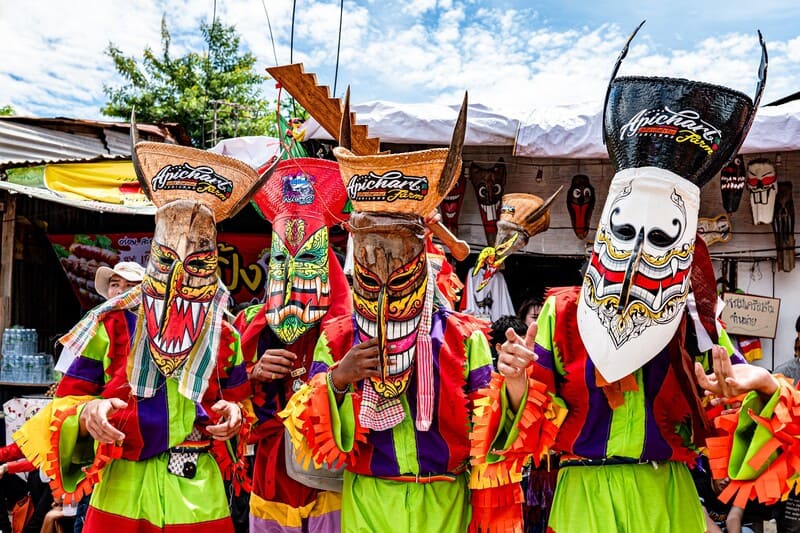
Colourful festivals
Songkran – Thai New Year (April 13 to 15)
It is the biggest holiday of the year in Thailand. It marks renewal, purification, and the arrival of good luck for the coming year. Songkran highlights:
- Water fights in the streets, with buckets and water guns
- Temple visits, offerings, and prayers
- Buddha statue baths with fragrant water
- Family Rites: Blessing Elders with Water
- Traditional parades and shows
- It is a time of joy, sharing and festive atmosphere throughout the country.
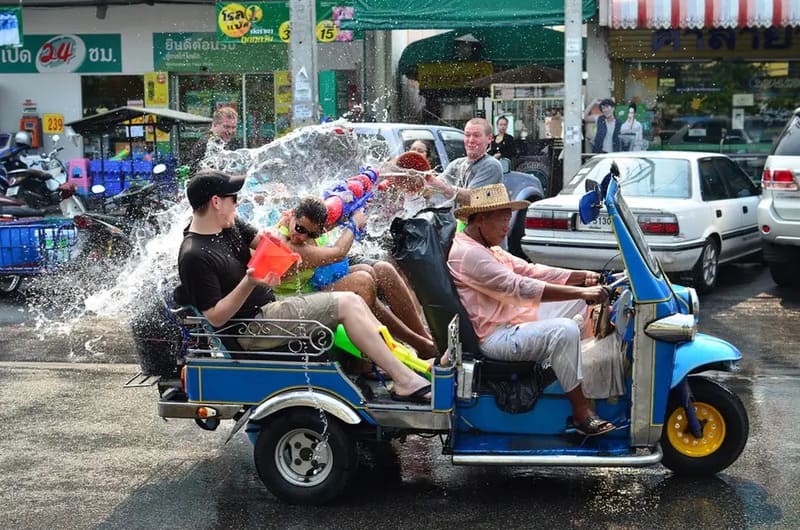
is celebrated to mark the Thai New Year in accordance with the Buddhist calendar.
Loy Krathong – the floating lantern festival
Celebrated during the full moon in November, this holiday pays homage to the goddess of water. Thais place small decorated rafts (krathong) on the rivers to thank the water and let go of the worries of the past year. The atmosphere is magical, between lights, silence and spirituality.
Yi Peng – the lanterns in the sky of Chiang Mai
In Chiang Mai, the festival of Loy Krathong takes on another dimension: thousands of flying lanterns are released into the sky. This spectacular moment symbolizes the abandonment of past sorrows and the hope of a bright future.

📌 Loy Krathong and Yi Peng 2025: Everything You Need to Know
Decorative art and architecture
Thai architecture reflects a subtle harmony between Buddhism, royal heritage, and folk traditions. Iconic temples such as Wat Phra Kaew or Wat Arun are distinguished by their curved roofs, slender stupas and intricately carved ornaments, perfectly illustrating the fusion between spirituality and architectural art.
These buildings are not only places of worship, but also true masterpieces, carrying a legacy of grandeur and power. The Grand Palace and other royal residences, as well as the historical remains of Ayutthaya, are a testament to the wealth and power of Thailand's ancient dynasties.
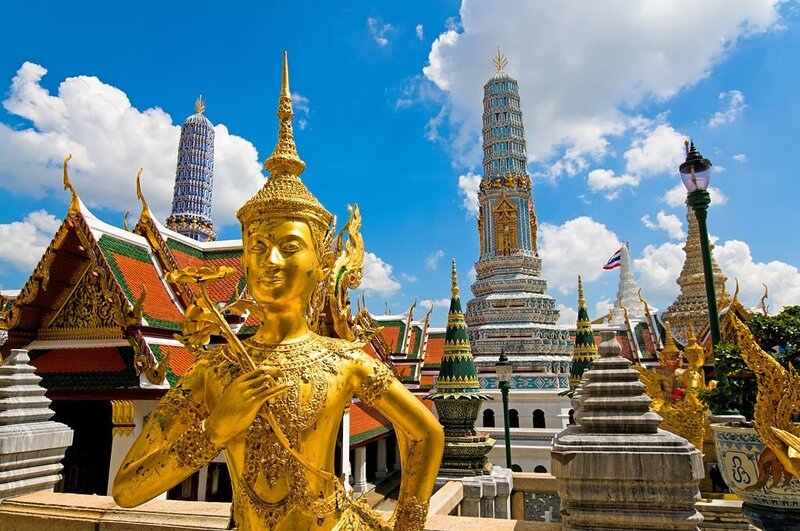
Traditional Thai Wedding
The traditional Thai wedding is a beautiful balance between Buddhist rites and local customs. The ceremony often lasts several days and includes important steps such as the ritual bathing of Buddha, offerings to ancestors and the exchange of rings – all gestures to wish for a happy and lasting union.
The outfits are also very symbolic: the bride wears an embroidered silk dress accompanied by a traditional shawl, while the groom opts for a sober suit in local style. Beyond elegance, these garments express respect for cultural heritage.
A highlight of the wedding is the blood kheo ritual, where relatives tie sacred threads around the wrists of the bride and groom while taking vows of happiness. In some regions, khom loi lanterns are lit or traditional games are held to create a friendly and joyful atmosphere.
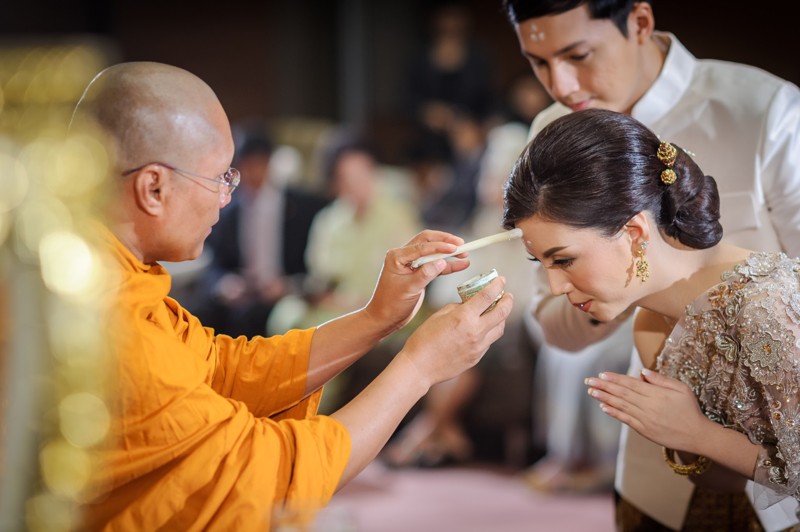
A few words to conclude,
As you walk through these elements, you now get a comprehensive overview of Thai culture – rich, alive, and deeply rooted in the daily lives of its people. Well beyond its paradisiacal beaches, among the most beautiful in the world, Thailand also seduces with the warmth of its people, the diversity of its gastronomy, and the richness of its traditions, between spirituality, art and hospitality. A Southeast Asian country that is both exotic and welcoming, which never ceases to amaze those who take the time to discover it in a different way.
👉 Read also:
- Thailand in May 101: The Complete Explorer's Guide
- What Not to Miss: Top 10 Festivals in Thailand in 2025
- Maeklong Railway Market Bangkok: Essential Guide 2025
- Koh Yao Noi: The secluded gem you’ve been searching for
- Power Plugs & Sockets in Thailand: What You Need to Know
- Khao Yai National Park: Where Nature Comes Alive














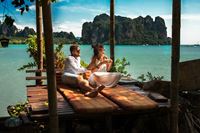

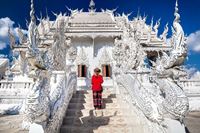
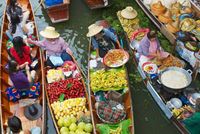


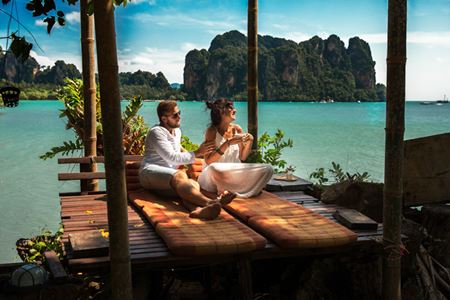
10-Day Thailand Honeymoon: Beaches & Romance
A tour specifically designed for newlyweds or even lovers! The 'Thailand itinerary 10 days for honeymoon' will bring you romantic experiences. Begin in Bangkok, where vibrant markets and dazzling temples set a magical tone. Next, revel in Phuket’s stunning beaches, perfect for sun-soaked relaxation. Visit Phi Phi Island, where crystal-clear waters and secluded coves offer intimate escapes. Conclude in the serene beauty of Ko Lanta, an idyllic retreat for unwinding together. This enchanting 10-day tour blends adventure, relaxation, and romance, crafting unforgettable moments for your honeymoon.

18 Days In-depth Thailand Tour with Koh Samui
Embark on an 18-day Thailand adventure like no other, from the vibrant streets of Bangkok to the tranquil mountains of Chiang Mai and Chiang Rai, and finally, a coastal paradise in Koh Samui. This comprehensive tour of Thailand in 18 days allows you to experience the essence of Thailand in just three weeks. Discover the magic and charm as you go on our Thailand tour, capturing unforgettable moments and creating lifelong memories.
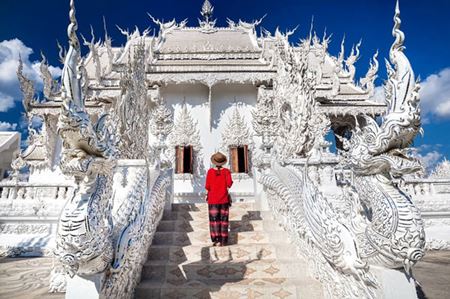
3 Weeks of Wonder: Treasures of Thailand, Cambodia, and Vietnam
Embark on a captivating 3-week journey through Thailand, Cambodia, and Vietnam, blending cultural immersion, historical exploration, and natural beauty. Begin in Bangkok, discovering vibrant streets and ancient temples. Experience the traditions of Chiang Mai and the serene Golden Triangle. In Cambodia, uncover the majestic Angkor temples and Tonle Sap’s floating villages. In Vietnam, feel the energy of Ho Chi Minh City, the lush Mekong Delta, and the charm of Hoi An. Conclude with the historical treasures of Hanoi and the breathtaking landscapes of Halong Bay. This 3-week Thailand, Cambodia, and Vietnam itinerary promises unforgettable memories.
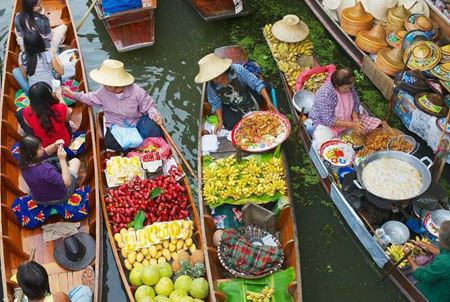
Grand Adventure Through Thailand in 3 Weeks
Embark on an unforgettable 3-week journey through Thailand, traveling from north to south. Begin your 20-day adventure in the bustling city of Bangkok before exploring the scenic northern regions of Chiang Mai, Chiang Rai, Pai, and Mae Hong Son. Then, continue your exploration as you journey southward to relax on the pristine beaches of Krabi, Khao Lak, and Phuket. This well-rounded itinerary ensures you experience Thailand from north to south, capturing its diverse landscapes and rich traditions. Don't hesitate—enroll now and discover the best of Thailand over 3 weeks!
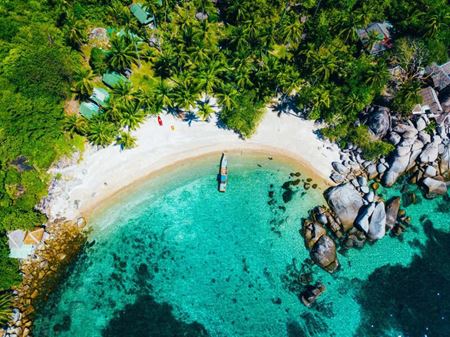
Perfect 10-Day Family Tour in Thailand from Bangkok
The ultimate Thailand family tour with a 10-day adventure will create the best memories for your family. Starting in the vibrant city of Bangkok, journey through the cultural heart of Chiang Mai, and conclude on the stunning beaches of Koh Samui. This meticulously planned itinerary offers a perfect blend of excitement, culture, and relaxation, making it an ideal vacation for families looking to create unforgettable memories together. Designed with families in mind, this 10-day tour ensures a delightful mix of adventure, relaxation, and cultural immersion for all ages.
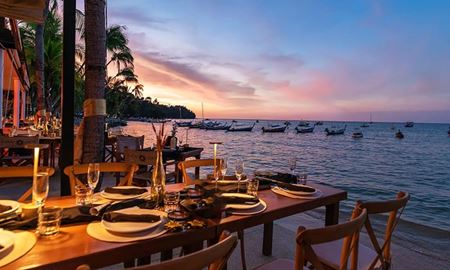
Thailand in 2 Weeks: From Ancient Temples to Tropical Paradise
This Thailand 2 weeks itinerary with highlights promises unforgettable experiences, blending adventure, cultural exploration, and relaxation. You'll uncover the country's hidden gems, beginning with a visit to the vibrant capital of Bangkok, where majestic temples await. Then, you'll journey to Chiang Mai and Chiang Rai, nestled amidst the lush green mountains of the north. Finally, you'll conclude this enriching adventure with a coastal retreat in Phuket, a tropical paradise located in the southern part of the country. Here, you can bask in the sun, explore crystal-clear waters through diving, and unwind on world-renowned beaches. That's why this Thailand 2 weeks itinerary with highlights ensures an enriching and memorable journey.

